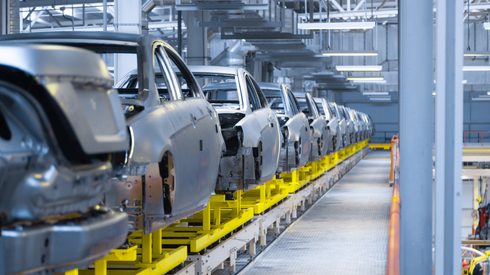More than 4 million electric vehicles were sold in the US under the Biden administration, the DOE announcement stated.
“[Demand for] EVs and stationary storage… [is] projected to increase the size of the lithium battery market five-to-ten-fold by the end of the decade, making US investments to accelerate the development of a resilient domestic supply chain for high-capacity batteries essential,” it said.
The DOE continued, “[The projects selected will] advance research, development, and demonstration of recycling and second-life applications for batteries once used to power EVs,” adding that the further funding will build upon $92 million in previously announced funding to advance EV battery recycling and expand equitable deployment, with the Biden administration’s goal to have EVs make up half of all vehicle sales in the US by 2030.
The eight projects selected represent the second phase of $200 million in total provided for EV battery recycling and second life applications and are part of the $7 billion in total funding provided by the BIL to support battery supply chains.
The announced funds targeting battery recycling efforts follows a second round of funding totaling over $3 billion awarded to 25 projects to boost domestic production of advanced batteries and battery materials announced September 20.
“The United States is securing a resilient domestic battery supply chain, thanks to the Biden-Harris Administration’s historic investments in innovation and battery recycling efforts,” US Secretary of Energy Jennifer M. Granholm said. “Finding new life for used batteries will significantly reduce pollution and our reliance on other nations, while lowering costs and supporting the clean energy transition.”
US scrap battery volumes to increase
The funding for battery recycling efforts comes at at time when US scrap battery volumes are expected to increase exponentially over the coming decade. In the US, 87,000 tonnes of battery scrap are expected to be available for recycling in 2024, and this tonnage is expected to increase by approximately 488% by 2034, according to estimates from Fastmarkets’ research team.
According to the DOE, as of 2023, the US had enough domestic battery recycling capacity to reclaim only 35,500 short tons of battery materials per year, with more facilities planned in the subsequent two to four years to reclaim an additional 76,000 short tons of material per year.
Amid these estimated increases, the DOE’s efforts under the BIL have worked to increase US supply chain resiliency, research new innovations in battery technology and decrease costs through methods like recycling.
The announcement also came mere days before the 2024 US presidential election, though many US market sources have expressed confidence in recent weeks that, while speed and some policy direction may change, efforts from the federal government to secure supply chains and build manufacturing capacity within the country will continue.
“Energy security is something that’s…[of] national interest. It doesn’t matter [who wins the presidential election], that’s still going to be a priority [for] whoever is in the White House,” Michael O’Kronley, chief executive officer of Ascend Elements during the “Walking the Tightrope: Business Model Impacts as Lithium Transitions from Specialty Chemical to Global Commodity” session at The Battery Show in Detroit on October 8.
“You can’t put the genie back in the bottle,” was a phrase numerous attendees at the Battery Show said, meaning that while federal leadership may change, the building of the battery supply chains is now too advanced to turn back or fully stop.
“We’re spending a lot of time speaking to people on both sides of the aisle, whether you’re talking to people who believe in energy transition, or people who promote energy addition. Everyone cares about domestic energy security and breaking our reliance on China,” David Park, CEO of Standard Lithium said at the session.
“A lot of the policies that may have been enacted in the past, they may shift or change a little bit, but the overall view is that they want a local domestic supply chain built in the United States. It does produce manufacturing jobs, and that’s what every politician wants, the ability to have more jobs.” O’Kronley said.
Though some market sources have noted hesitancy in moving forward before the election, there have been expectations that after the election, once leadership has been decided, companies will be more willing to act given a clearer idea of policy direction.
“I think the November election certainly has a big impact…the uncertainty in and around the outcome [has] driven big capital project decisions to kind of hold back for the last 12-15 months, especially from foreign countries looking to bring the supply chain to North America.” Alex Holmes, chief operating officer at Nano One Materials Corp said during the session. “But getting through the election will then help the supply chain to understand where to deploy the capital.”
Funding awardees announced October 31 were Siemens Corporation, Tennessee Technological University, B2U Storage Solutions Inc, Caterpillar Inc, General Motors LLC, ReJoule Incorporated, Rochester Institute of Technology, and the University of Akron.
The DOE announcement stated that “selection for award negotiations is not a commitment by DOE to issue an award or provide funding. Before funding is issued, DOE and the applicants will undergo a negotiation process, and DOE may cancel award negotiations and rescind the selection for any reason during that time.”
The DOE released a notice of intent for a third phase of funding for EV recycling and reuse projects of up to $70 million in September, with a tentative funding opportunity announcement in December 2024.
Discover how the 2024 US election is impacting and could impact US and global commodity markets with Fastmarkets. Head to our US election hub.






